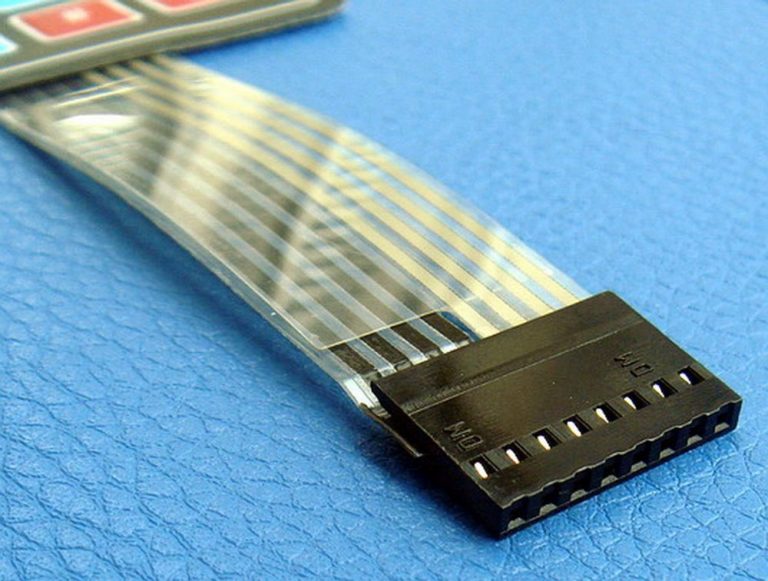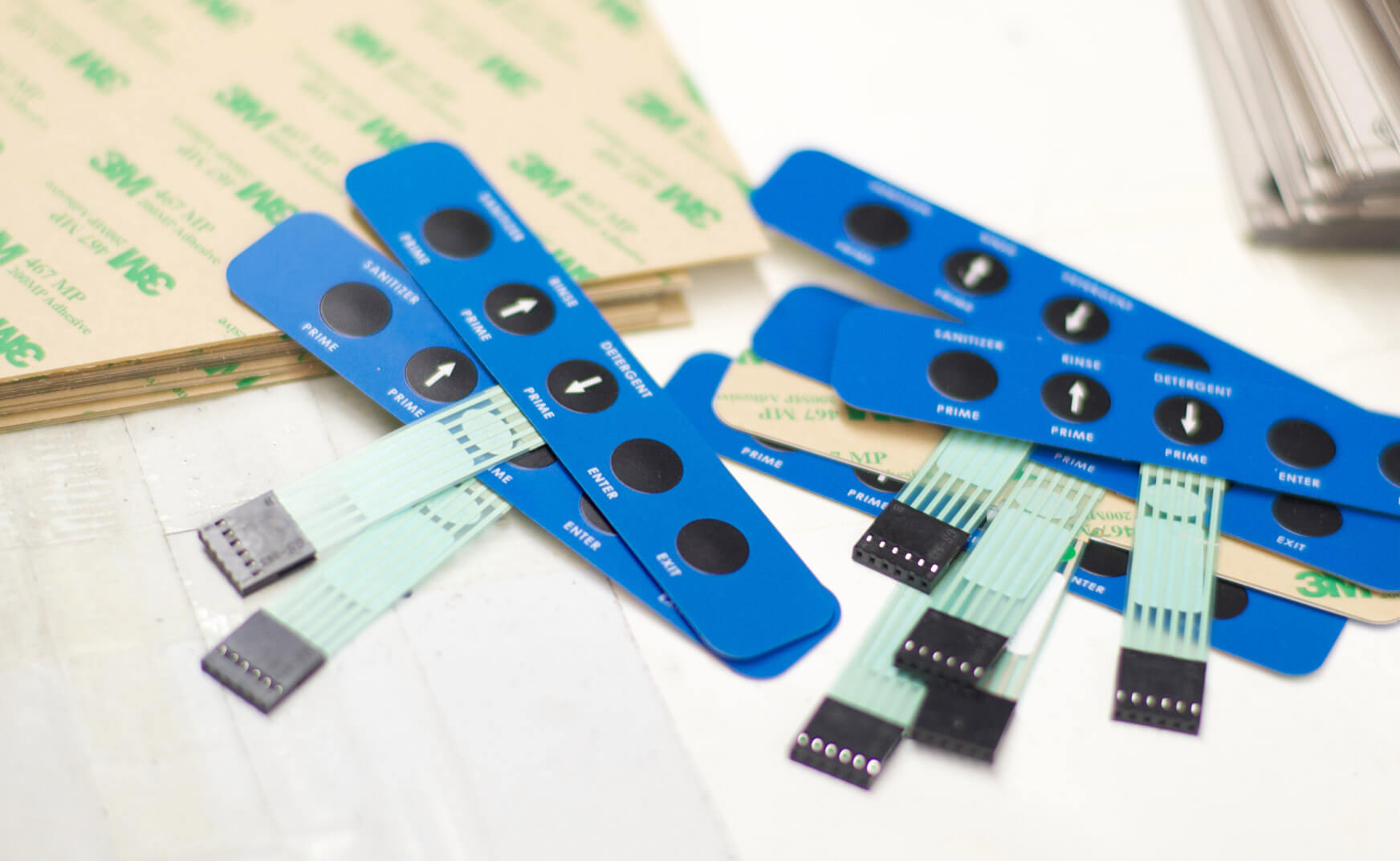How Membrane Switches Are Revolutionizing User Interface Design
How Membrane Switches Are Revolutionizing User Interface Design
Blog Article
Understanding the Value of Membrane Switches in Interface
Membrane buttons are essential components in the design of efficient customer interfaces, assisting in not only functionality however likewise boosting aesthetic allure and user interaction. Their one-of-a-kind attributes, such as resistance to adjustable layouts and environmental factors, make them ideal for a diverse range of applications across several industries. As we discover the different advantages and future trends connected with Membrane modern technology, it ends up being clear that these buttons are greater than just components; they stand for a merging of technology and functionality. The implications of this modern technology on individual experience deserve taking a look at better.
What Are Membrane Switches?

The spacer layer, which has glue homes, permits the splitting up of the circuit layer from the overlay, making sure that the switch stays in a non-activated state up until pushed. When pressure is put on the overlay, it presses the spacer layer, bridging the gap and completing the circuit in the underlying layer. This style not only lowers the physical area needed for typical mechanical switches yet likewise improves the resilience of the device, as Membrane buttons are usually resistant to dust, wetness, and various other ecological aspects.
Frequently found in applications varying from customer electronic devices to medical devices, Membrane buttons are important to modern technology, supplying a user-friendly and efficient interface that lines up with modern style demands.
Benefits of Membrane Switches
While many button technologies exist, Membrane Switches offer distinct advantages that make them specifically preferable in numerous applications. Among the primary benefits of Membrane switches is their small style, which permits space-saving implementations in devices where property is limited. Their thin profile not only boosts aesthetic allure however also helps with light-weight building and construction.
One more substantial benefit is their resistance to ecological factors. Membrane switches are typically secured versus moisture, dirt, and contaminants, making them excellent for usage sought after atmospheres, such as clinical tools and industrial tools. This toughness prolongs the life-span of the button, reducing maintenance costs and improving integrity.
Additionally, Membrane buttons can be tailored to satisfy details design requirements, including unique graphics and colors that enhance individual communication. Their responsive feedback options can also be customized to provide a satisfying customer experience. Furthermore, Membrane buttons are affordable, especially in high-volume applications, as they can be created efficiently.
Applications in Different Industries

In the customer electronics field, Membrane buttons prevail in devices such as microwaves, cleaning equipments, and remote controls. Their responsive comments and visual options boost individual experience while giving a sleek, contemporary look. Furthermore, automobile suppliers utilize Membrane switches in control panel controls and infotainment systems, where area is limited, and individual involvement is crucial.
Moreover, the commercial market leverages Membrane switches in control panels for equipment and equipment, permitting user-friendly operation in typically harsh settings. Their resistance to chemicals and moisture makes certain longevity and reliability in these applications. On the whole, the adaptability of Membrane Switches contributes substantially to their prevalent use, making them essential in various technological domain names.
Style Factors To Consider for Membrane Switches

When designing Membrane buttons, numerous essential important source considerations need to be considered to make sure optimal functionality and individual experience. Firstly, the choice of products is important; selecting durable, top quality substrates can boost the switch's longevity and resistance to ecological variables such as moisture and temperature level fluctuations.
Secondly, the style of the visuals overlay need to prioritize quality and ease of usage. Icons and text should be clear, and the layout needs to assist in user-friendly communication (membrane switches). In addition, tactile feedback is important; integrating a responsive dome or various other systems can boost the user experience by offering physical confirmation of activation
Another crucial factor is the switch's electrical efficiency. Developers should guarantee that the conductive traces are correctly designed to reduce resistance and prevent signal interference. This includes analyzing the required actuation force and making sure compatibility with have a peek at this site the digital elements they will interface with.

Future Trends in Membrane Innovation
As technology proceeds to advance, Membrane switches are positioned to progress substantially, driven by advancements in products and making methods. One emerging pattern is the incorporation of sophisticated products, such as adaptable substrates and conductive inks, which boost durability and reduce the total weight of Membrane buttons. These products not only boost the tactile feedback however additionally enable the layout of switches that can withstand harsher ecological conditions.
In addition, the combination of touch-sensitive technologies is changing traditional Membrane Switches into even more interactive interface. Capacitive touch sensors installed within Membrane button panels can provide an extra user-friendly and receptive individual experience, aligning with the expanding demand for streamlined, modern layouts in consumer electronics.
Additionally, advancements in printing methods, such as digital and 3D printing, make it possible for rapid prototyping and customization of Membrane switches. This versatility enables makers to react a lot more rapidly to market needs and customer preferences.
Lastly, sustainability is coming to be a significant emphasis, with producers discovering eco-friendly products and processes. As these patterns unravel, the future of Membrane modern technology guarantees boosted capability, aesthetic appeal, and environmental duty, strengthening their function in advanced individual interfaces throughout different markets.
Verdict
In final thought, Membrane Switches stand for a crucial element in the layout of customer interfaces, integrating capability with aesthetic adaptability. As improvements in technology continue, the development of Membrane switches is anticipated to more fine-tune customer interfaces, driving technology and enhancing use in a progressively complex technical landscape.
Membrane switches are essential parts in the style of efficient customer interfaces, facilitating not only functionality yet also enhancing visual appeal and user communication.Membrane Switches serve as a crucial component in different customer interfaces, facilitating a seamless interaction in between users and electronic devices.While countless button technologies exist, Membrane Switches offer distinct advantages that make them especially desirable in numerous applications.Furthermore, Membrane buttons can be tailored to fulfill particular design requirements, integrating unique graphics and shades that enhance customer communication.In final thought, Membrane Switches stand for a vital part in the design of user interfaces, incorporating performance with aesthetic versatility.
Report this page